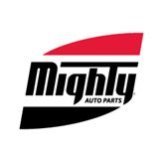-
Welcome to Auto Parts Forum
Whether you are a veteran automotive parts guru or just someone looking for some quick auto parts advice, register today and start a new topic in our forum. Registration is free and you can even sign up with social network platforms such as Facebook, X, and LinkedIn.
EGR System | ASE Test Practice Question 5
-
Similar Topics
-
By Mighty Auto Parts
The post
link hidden, please login to view appeared first on link hidden, please login to view. When performing engine maintenance, the coolant is seldom considered. While the freeze factor is usually the first consideration at the start of winter, few consider the corrosive inhibitors and lubricants that become depleted, promoting water pump failure. In addition, the accumulation of engine and radiator deposits can affect engine cooling. Coolant exchangers are highly recommended […]
The post
link hidden, please login to view appeared first on link hidden, please login to view.
link hidden, please login to view -
By Dorman Products
Improved EGR cooler for the 3.0L EcoDiesel’s Achilles’ heel | Dorman OE FIX 904-002
-
By Counterman
The ASE Education Foundation announced its new officers and board members for the coming year. The new chair of the ASE Education Foundation is Dwayne Myers, president and CEO of Dynamic Automotive. Brian LaCroix, automotive instructor at Capital Region BOCES, holds the role of vice chair. Jim Sennett, manager of automotive repair programs for the American Automobile Association (AAA) is treasurer and Fay Watts, technical support operations (TSO) technician development manager for Ford, serves as secretary. Joelle Pollak, co-founder of Promotive, is serving as past chair.”
Two new board members, Andrew Graham, automotive instructor at Forsyth Central High School in Georgia and Doug Wilberg, senior manager, Military Transitions Program with Caliber Collision Centers, began their three-year terms the first of the year.
Departing from the
link hidden, please login to view board are Mitch Becker, operations specialist, Protech Automotive Solutions; Dennis Harden, retired chief of career and technical education for the Iowa Department of Education; Eric Kenar, former manager, technician environment and service technical college for General Motors; and Trey Michael, former board chair and director CTE and career pathways, North Carolina Department of Public Instruction. “We thank these officers and board members for generously sharing their time and expertise to guide the
link hidden, please login to view,” said Mike Coley, ASE Education Foundation president. “As we address the technician shortage and advance significant initiatives in the coming year, their experience and knowledge will be indispensable. We appreciate all foundation board members, past and present, for their active participation and unwavering interest in the future of the transportation industry.” The post
link hidden, please login to view appeared first on link hidden, please login to view.
link hidden, please login to view -
-
By Dorman Products
Would you rather practice swapping a flat tire for a spare or learn the hard way?




Recommended Posts
Join the conversation
You can post now and register later. If you have an account, sign in now to post with your account.
Note: Your post will require moderator approval before it will be visible.